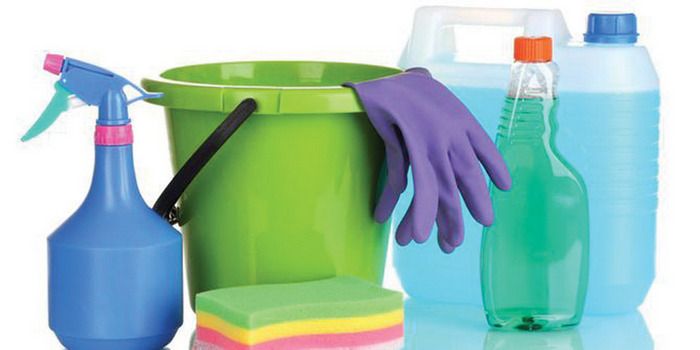Save The Planet. Use Environmentally-friendly Cleaners At Home


By Mariam Mokhtar
If you are concerned about the environment and you dislike using chemicals, or perhaps, you, or a family member is allergic to some chemicals, then why not try making your own cleaners? Some people claim that homemade cleaners are easy to make, and are easier on the environment. They are also better for one’s health and one’s wallet.
Before the washing machine or launderette, the dhobi man took care of most of our laundry, especially the larger items like bed sheets and towels. Flogging the item of clothing against boulders in the river, would remove ingrained dirt and soften the fibres. Items were always dried in the sun.
Traditional brooms, made from the fronds of the coconut tree, have now been replaced by plastic brooms or vacuum cleaners. At one time, council workers used to sweep roads with brooms, but now cleaning lorries, clean the tarmac. Even leaves are sucked by a machine, instead of being swept into a pile and collected for making compost.
The trick to an eco-friendly and green home, is to recycle, use cleaners as sparingly as possible and make the cleaners from everyday kitchen ingredients. Some plants, like lemongrass and eucalyptus, have antifungal and antibacterial properties.
One of the most useful kitchen ingredients is vinegar. It is biodegradable, safe on stainless steel, safe on the hands, and an effective rinse agent, to reduce levels of E. coli, on kitchen surfaces.
Vinegar cuts grease and also inhibits mould growth, dissolves limescale and freshens the air.
In the kitchen
1. Multi-purpose cleaner
- 1 part vinegar
- 1 part water
- A few drops of dishwashing liquid
Pour the contents into a spray bottle. Just spray and wipe surfaces. The addition of a similar volume of rubbing alcohol or surgical spirit, will dry the surface faster. This is an optional step.
2. Fragrant cleaner for mopping tiles
- 10 tablespoons vinegar
- 7 tablespoons herbal peppermint tea (for fragrance)
- 4 litres of hot water
Combine ingredients in a pail and use on tiles, terrazzo or wooden floors. If herbal tea is not available, use a few drops of lavender, tree tea or lemongrass oils, will do.
In the bathroom
Spray around the toilet seat with a mixture of one part vinegar with one part water. Wipe the surface clean afterwards.
Get rid of stubborn stains in the toilet bowl with 500ml of vinegar. Leave for an hour before scrubbing vigorously, then flush.
The shower head can be cleaned by unscrewing it from the shower hose, before soaking it in vinegar, overnight. Flush with hot water before use.
The bath, taps and washbasin can be cleaned with a half and half mixture of vinegar and water.
Keep a spray bottle of one part of vinegar to two parts of water and spray this mixture on the shower curtain or tiles, to prevent mildew.
In the drawing room
Furniture polish
Combine equal parts of vinegar and vegetable oil. Apply the mixture to the furniture with a cloth, then buff with a soft dry cloth.
Cleaning brassware
Mix 1 part of vinegar to 10 parts of water. Apply this to the brassware, or soak small items in the mixture, in a bucket of water, to remove the green and black tarnish.
As an odour controller
1. For getting rid of cooking smells
Boil one teaspoon of vinegar with one mug (275ml) of water, to get rid of unpleasant cooking odours
2. As an air freshener
In a spray bottle, mix one teaspoon of baking soda, one tablespoon of vinegar and 500ml (about two mugs) of water. Use the mixture after it has stopped frothing
3. To remove the smell of vomit from a car or room
Clean the area thoroughly, before placing a bowl of vinegar on the floor, and leave it overnight. Close the windows and doors, for it to work effectively.


